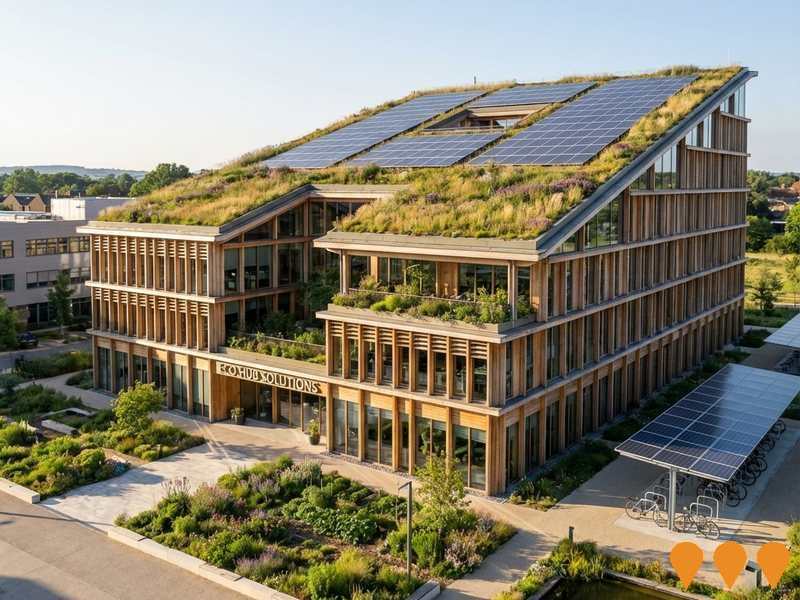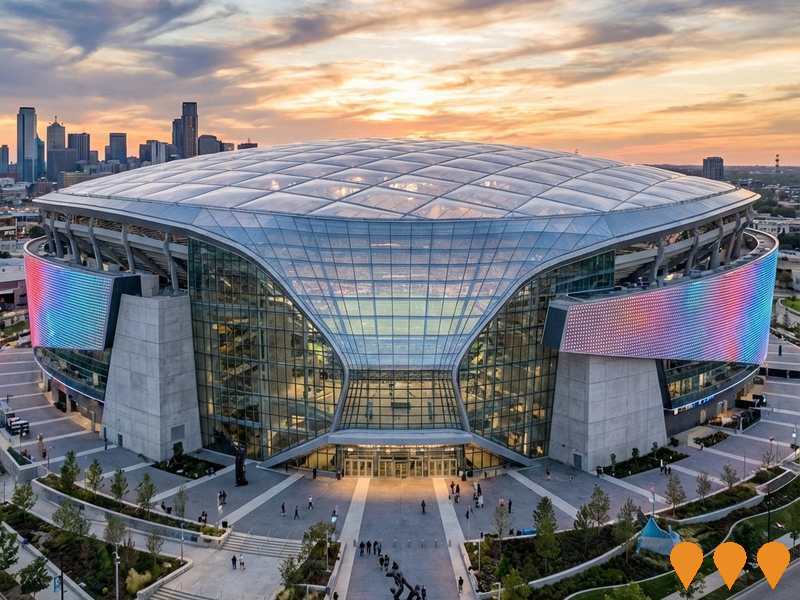Chart Color Schemes
est. as @ -- *
ABS ERP | -- people | --
2021 Census | -- people
Sales Activity
Curious about local property values? Filter the chart to assess the volume and appreciation (including resales) trends and regional comparisons, or scroll to the map below view this information at an individual property level.
Find a Recent Sale
Sales Detail
Population
Goulburn Surrounds lies within the top quartile of areas nationally for population growth performance according to AreaSearch analysis of recent, and medium to long-term trends
Goulburn Surrounds' population is approximately 15,146 as of August 2025. Between 2021 and June 2024, the population increased by 1,307 people (9.4%), from 13,839 to an estimated resident population of 14,401. This includes 387 new addresses validated since the Census date. The population density is around 1.7 persons per square kilometer. Goulburn Surrounds' growth rate exceeded that of its SA4 region (4.7%) and non-metro areas. Interstate migration contributed approximately 73.7% to overall population gains during recent periods, with other factors also being positive.
AreaSearch uses ABS/Geoscience Australia projections for each SA2 area released in 2024 with a base year of 2022, and NSW State Government's SA2 level projections for areas not covered by this data, released in 2022 with a base year of 2021. Growth rates by age group are applied to all areas for years 2032 to 2041. By 2041, the area is projected to increase by 2,841 persons, reflecting a total increase of 12.9% over the 17-year period.
Frequently Asked Questions - Population
Development
AreaSearch assessment of residential development activity positions Goulburn Surrounds among the top 25% of areas assessed nationwide
Goulburn Surrounds has approved approximately 87 dwellings annually. Between FY-21 and FY-25, it approved a total of 438 homes, with another 19 approved so far in FY-26. On average, about 2 people have moved to the area per dwelling built over these years.
This suggests balanced supply and demand, leading to stable market conditions. The average construction cost value for new homes is around $566,000, which is moderately higher than regional levels, indicating a focus on quality construction. In FY-26, commercial development approvals totaled approximately $5.5 million, suggesting limited commercial development activity compared to residential.
When compared to the Rest of NSW, Goulburn Surrounds shows similar construction activity per capita, supporting market stability in line with regional trends. Recent construction consists mainly of detached houses (97%) and townhouses/apartments (3%). This maintains the area's low-density character, attracting space-seeking buyers. With around 177 people moving to the area per approval, Goulburn Surrounds reflects a developing region. Future projections estimate an additional 1,953 residents by 2041. Based on current development patterns, new housing supply is expected to meet demand, presenting good conditions for buyers and potentially facilitating further population growth beyond current projections.
Frequently Asked Questions - Development
Infrastructure
Goulburn Surrounds has strong levels of nearby infrastructure activity, ranking in the top 40% nationally
Changes to local infrastructure significantly impact an area's performance. AreaSearch has identified 61 projects that may affect the region. Notable initiatives include Crookwell 3 Wind Farm, Mary's Mount Residential Subdivision (Blakelys Run), Homes NSW Social Housing Development - Crestwood, and Mistful Park Estate. The following list details those most relevant.
Professional plan users can use the search below to filter and access additional projects.
INFRASTRUCTURE SEARCH
 Denotes AI-based impression for illustrative purposes only, not to be taken as definitive under any circumstances. Please follow links and conduct other investigations from the project's source for actual imagery. Developers and project owners wishing us to use original imagery please Contact Us and we will do so.
Denotes AI-based impression for illustrative purposes only, not to be taken as definitive under any circumstances. Please follow links and conduct other investigations from the project's source for actual imagery. Developers and project owners wishing us to use original imagery please Contact Us and we will do so.
Frequently Asked Questions - Infrastructure
Goulburn Hospital Redevelopment
A $165 million redevelopment of Goulburn Hospital including a new four-storey Clinical Services Building with emergency department, operating theatres, intensive care unit, medical imaging, maternity unit, and comprehensive healthcare facilities. Completed in June 2024, this represents the most significant upgrade in the hospital's 130-year history.
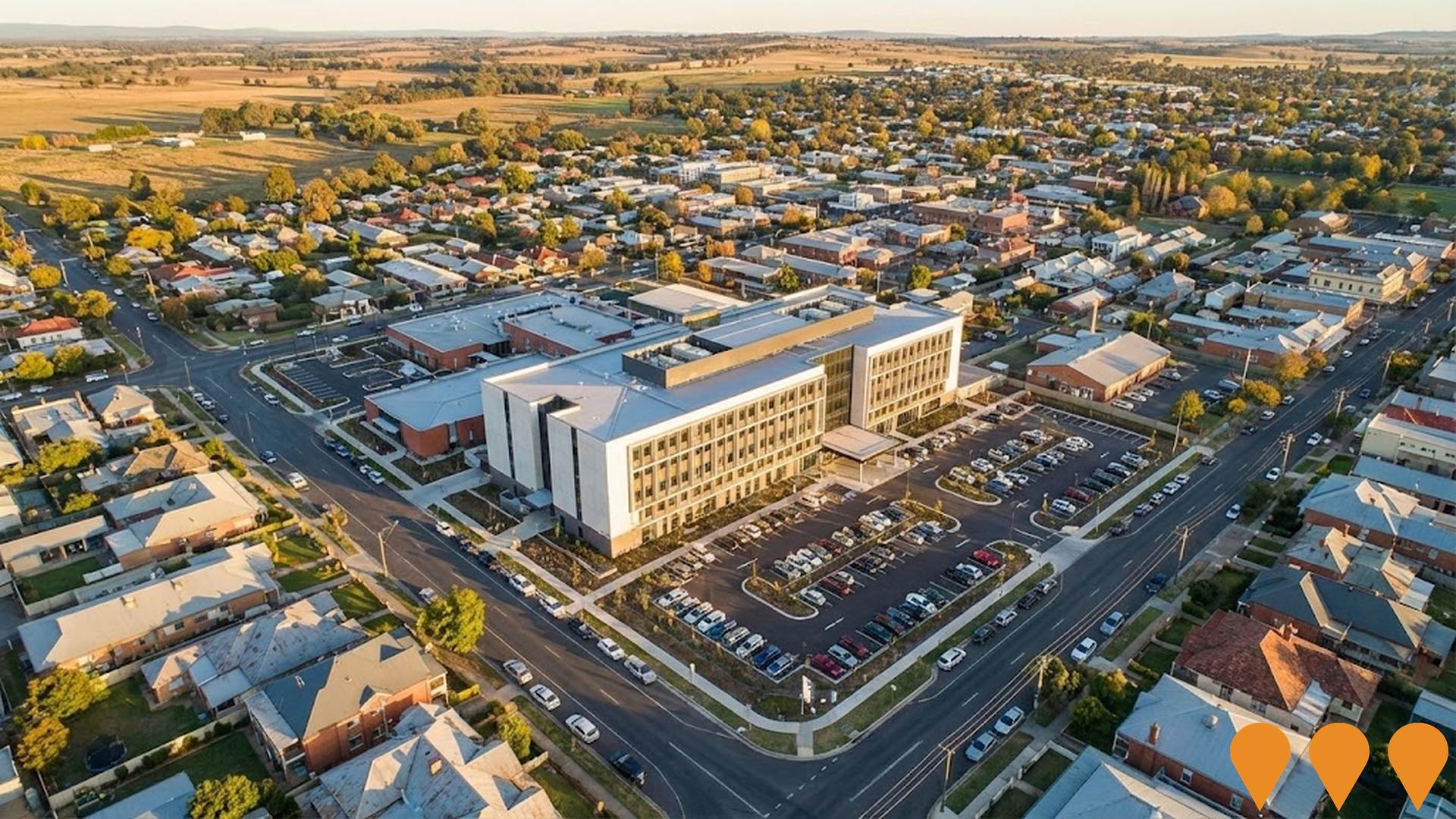
Goulburn Water and Sewer Infrastructure Upgrades
Major upgrades to Goulburn and Marulan's water treatment and sewerage infrastructure, including the Marulan Water Treatment Plant upgrade funded by $27.2 million from the Australian Government, Goulburn Wastewater Treatment Plant expansion to serve up to 40,000 equivalent persons, new water main installations, sewer pump station upgrades, water storage improvements, and water recycling enhancements to support growing population, housing development, and drought resilience.
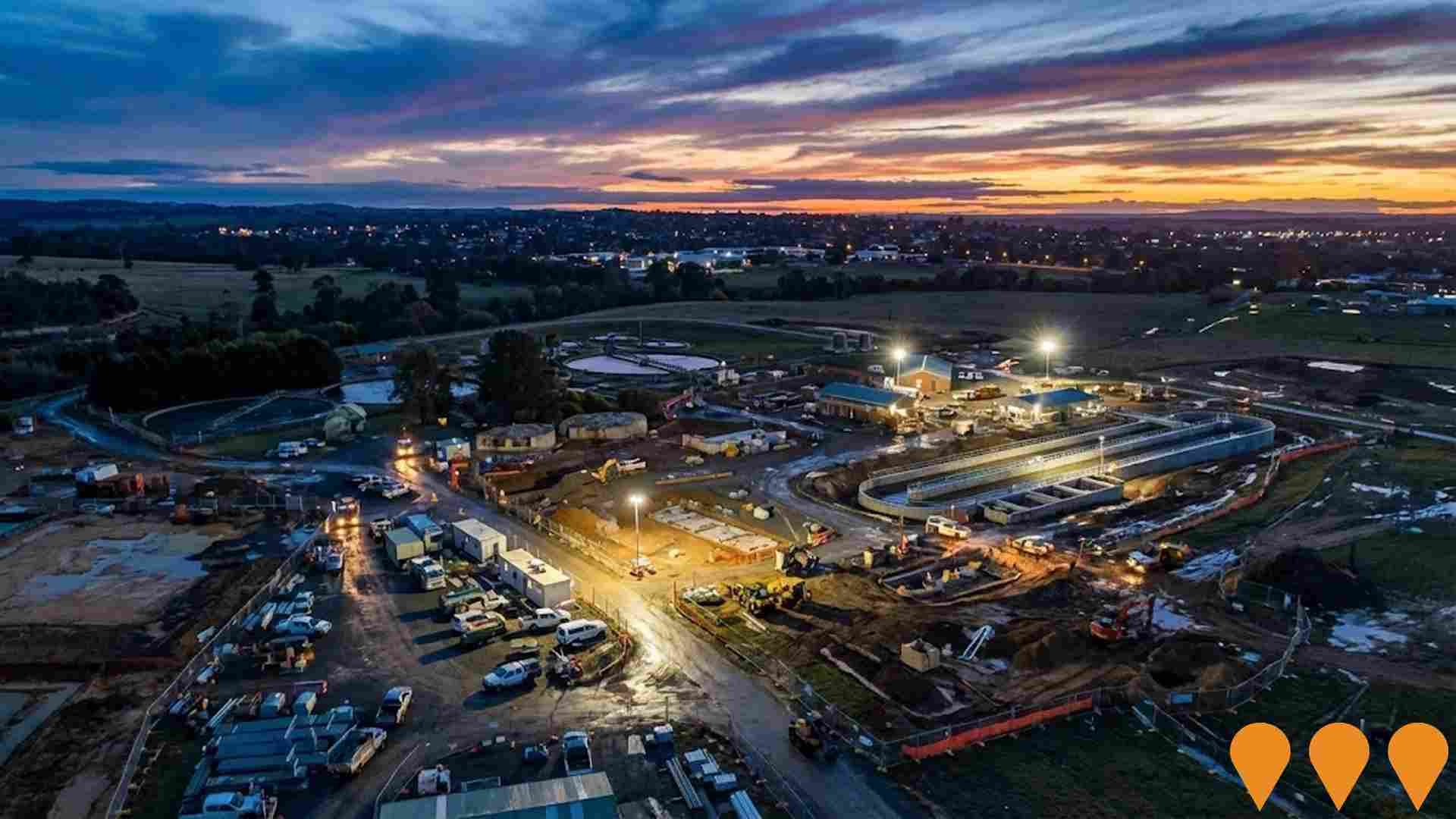
Waterway Improvement Strategy and River Walkway Development
Comprehensive waterway strategy and action plan to rehabilitate and improve the Wollondilly and Mulwaree Rivers, including river walking tracks and recreational facilities. The project has delivered over 10km of walkways since 2016 with $5.7 million invested. Ongoing work includes waterway rehabilitation, weed removal, native revegetation, and development of recreational linkages across the region. The Wollondilly River Walkway now extends 4km from Marsden Weir to Tarlo Street Bridge with plans for further extension.
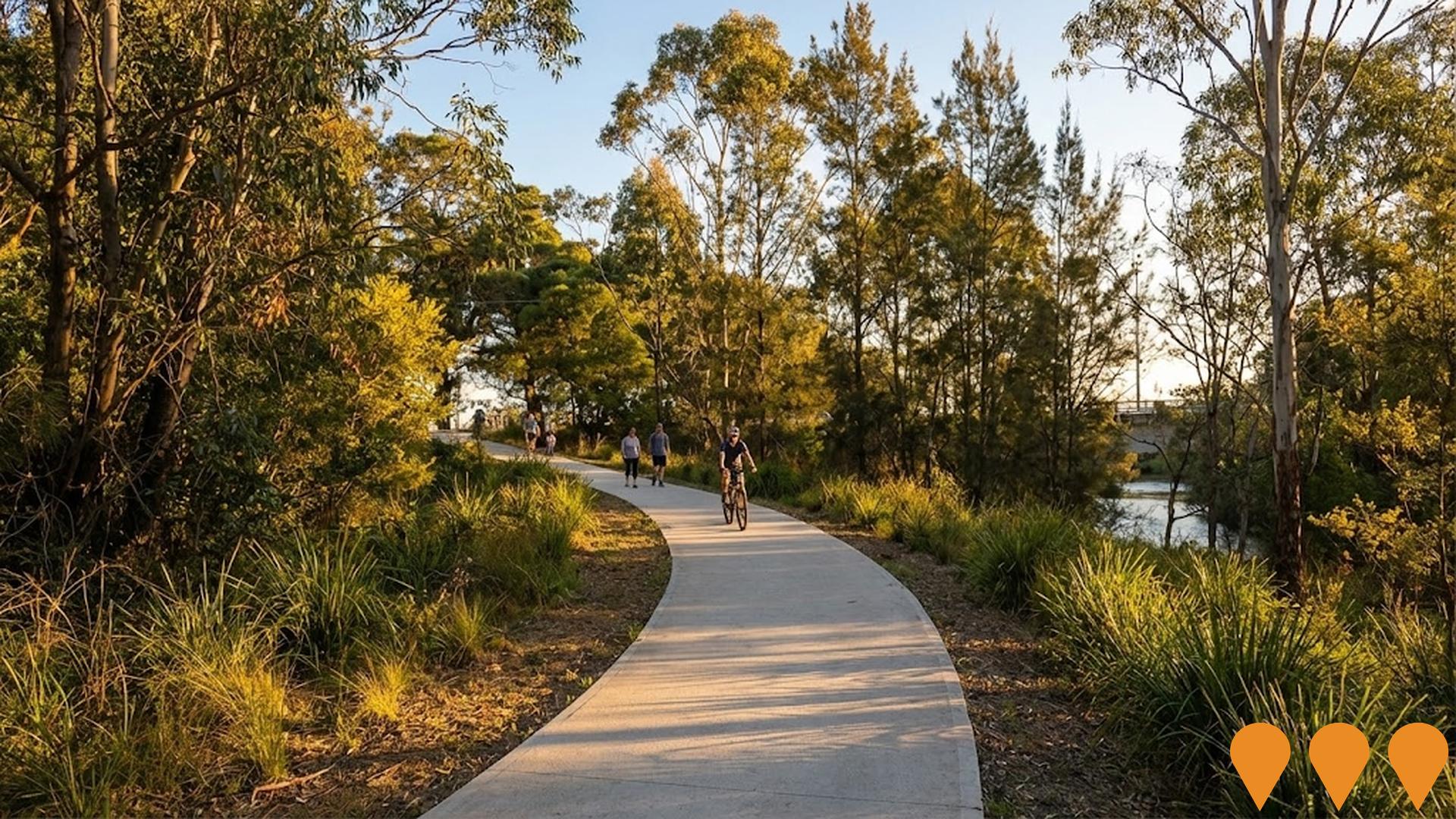
Goulburn Rail Trail
A proposed 25km rail trail within Goulburn Mulwaree Council area, utilizing the historic Goulburn to Crookwell railway corridor from Goulburn CBD to Graywood Siding at Woodhouselee. The trail will link with existing shared pathways and cross the Wollondilly River on a steel lattice bridge. Following Upper Lachlan Shire Council's withdrawal in 2022, the project was revised to focus within Goulburn Mulwaree boundaries. Projected to attract 66,065 visitors annually with $7.3 million economic injection.
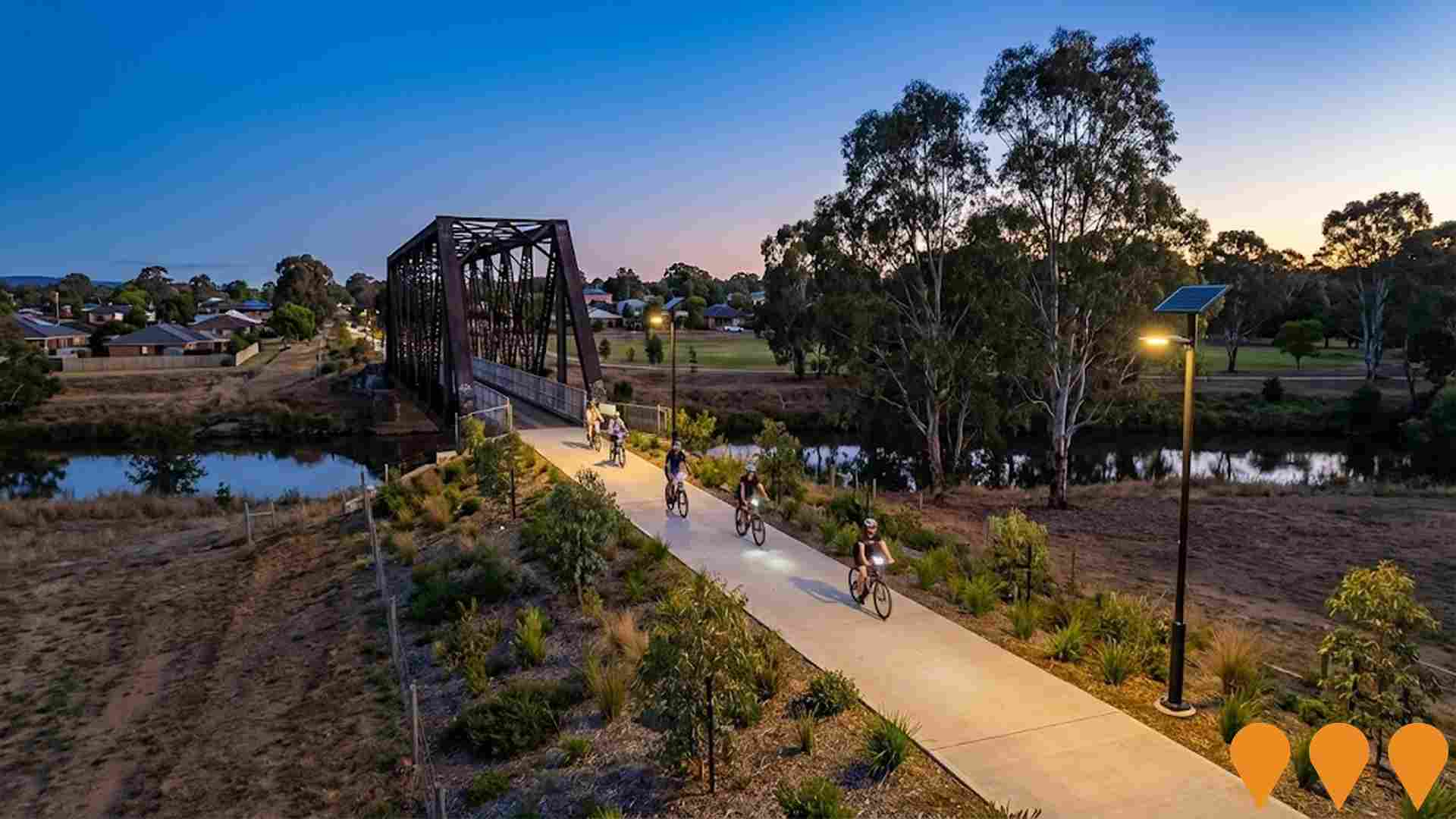
CBD & Surrounds Transformation Project
A strategic planning framework to revitalize Goulburn's CBD by increasing residential density and housing diversity while preserving heritage character. The project proposes amendments to planning controls across four key precincts to accommodate 7000 additional residents expected by 2036, enabling medium-density housing options including 1 and 2-bedroom units. Focus areas include the CBD Core, Northern Gateway Precinct, Southern Gateway Precinct, and Mixed-Use Edge. Currently on public exhibition until August 22, 2025.
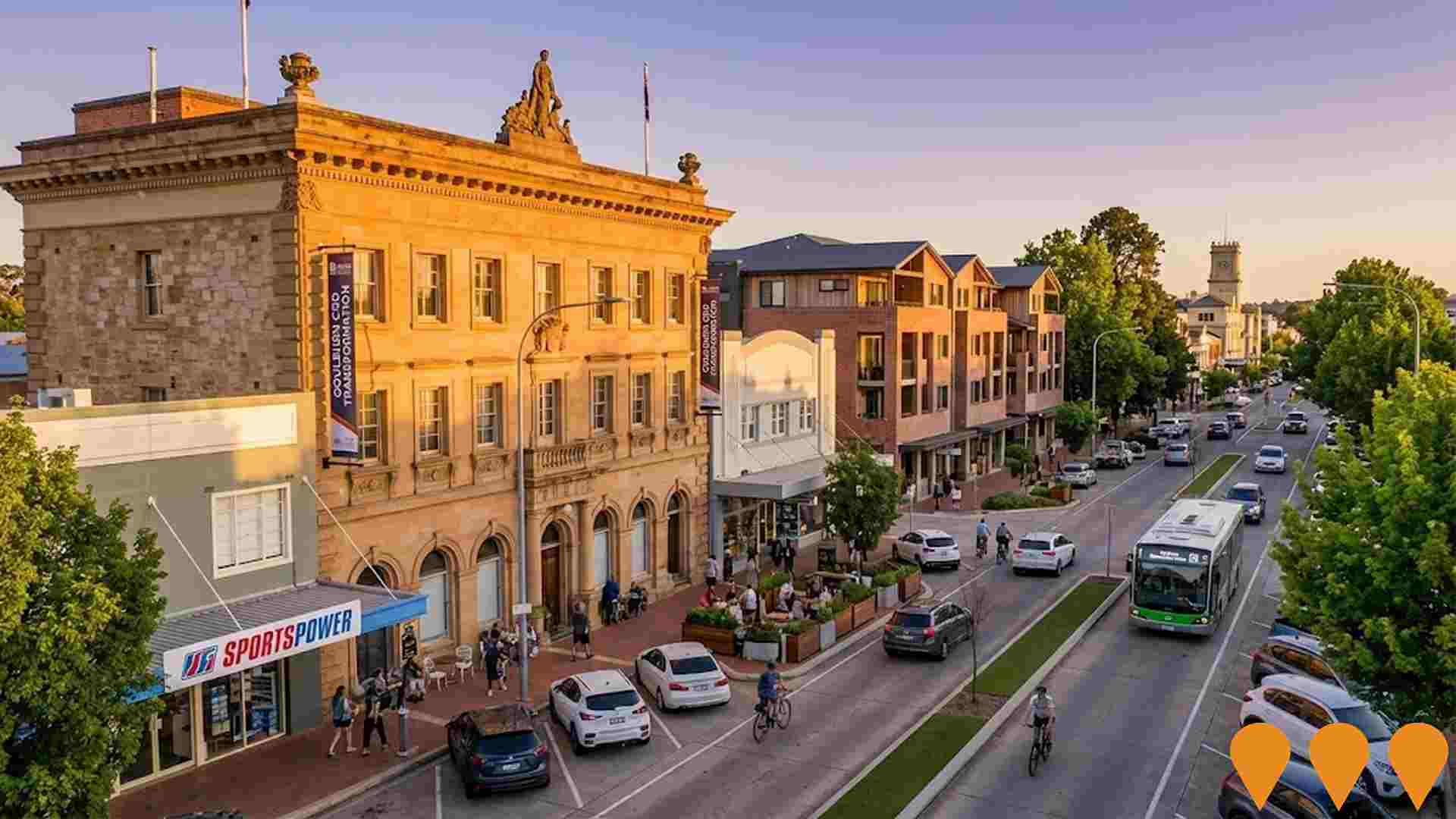
Goulburn Community Centre
Development of a modern, sustainable, environmentally friendly purpose-built civic space for community and visitors. The project will act as a central anchor for Council's Community Services Programs and provide community, social, recreation, respite and event opportunities suitable for a wide range of ages and abilities. The project was deferred in September 2023 due to financial constraints but remains a priority project for 2023-2026.
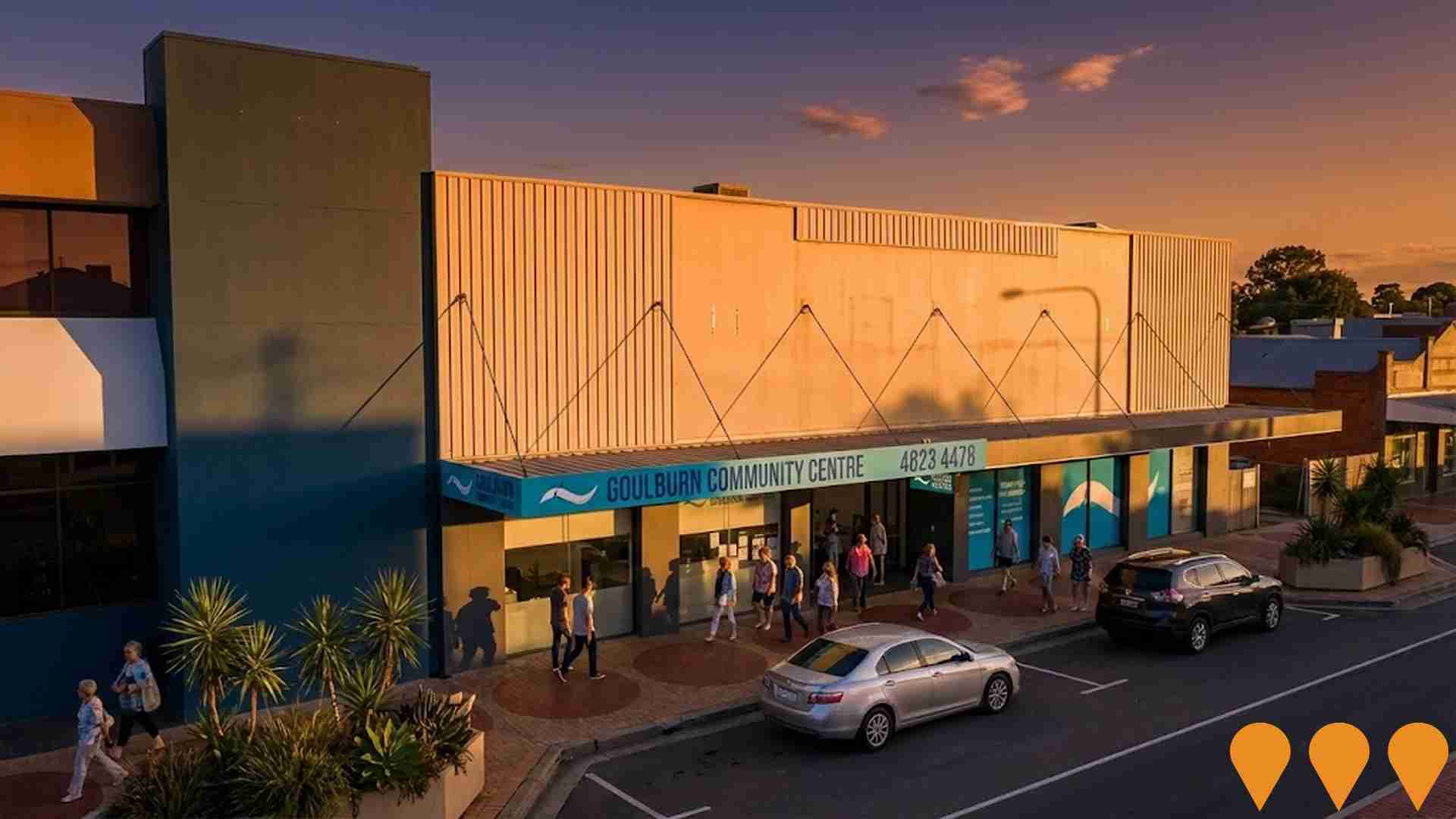
Crookwell 3 Wind Farm
Operational 16-turbine wind farm near Goulburn delivering ~58 MW. Developed and operated by GPG Australia with an 80% offtake PPA to Telstra. Commissioning completed and project handed to operations in early 2025.
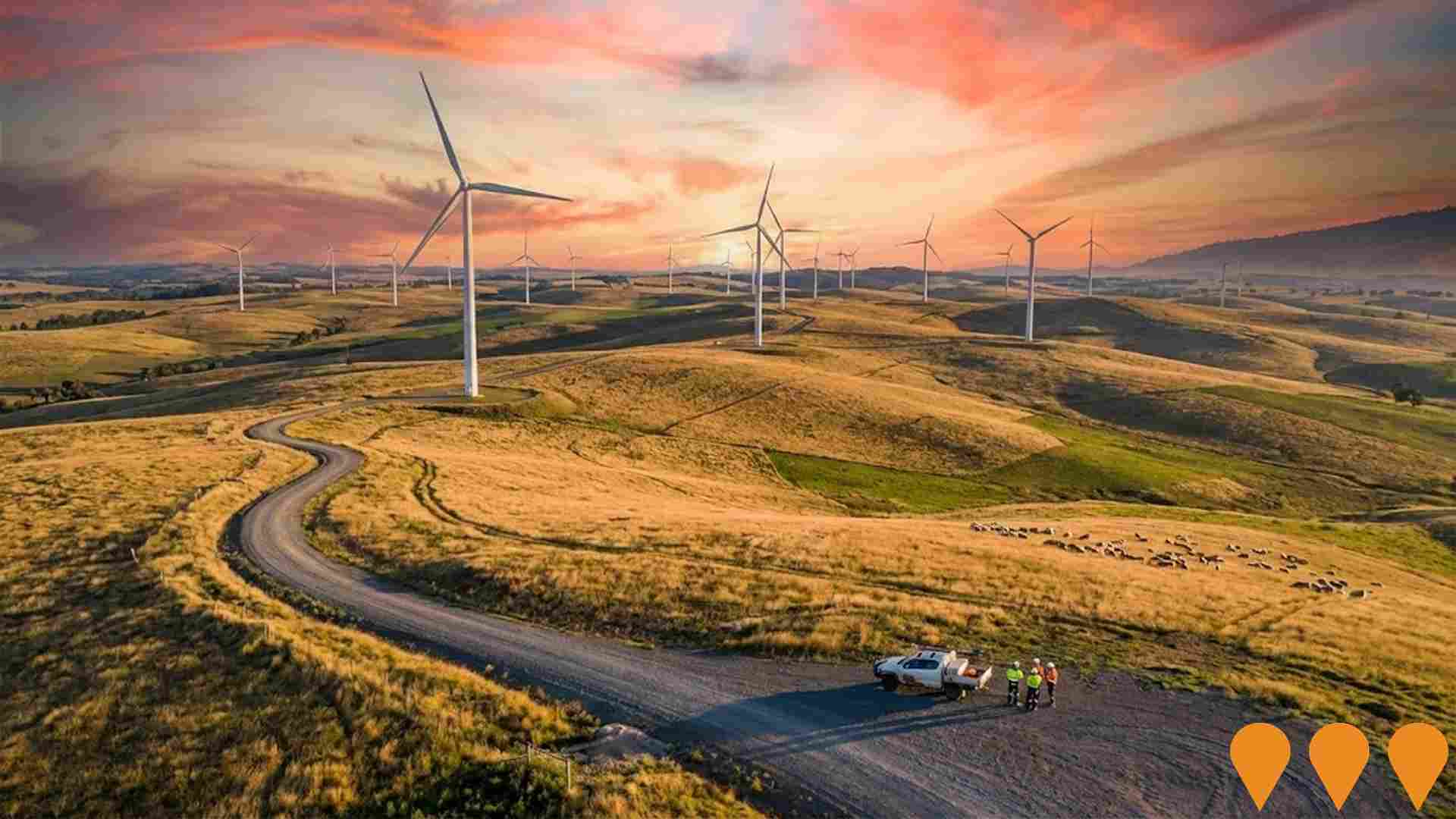
Mistful Park Estate
A 5-stage, 212-lot residential estate development by Ganter Constructions featuring residential blocks from 700-3700sqm, commercial precinct with supermarket opening in 2025, service station construction commencing soon, cafe, and community facilities. Stages 1, 2, 3, and 5 sold out, Stage 4A in progress with 5 blocks remaining in first release and 4 new blocks released.
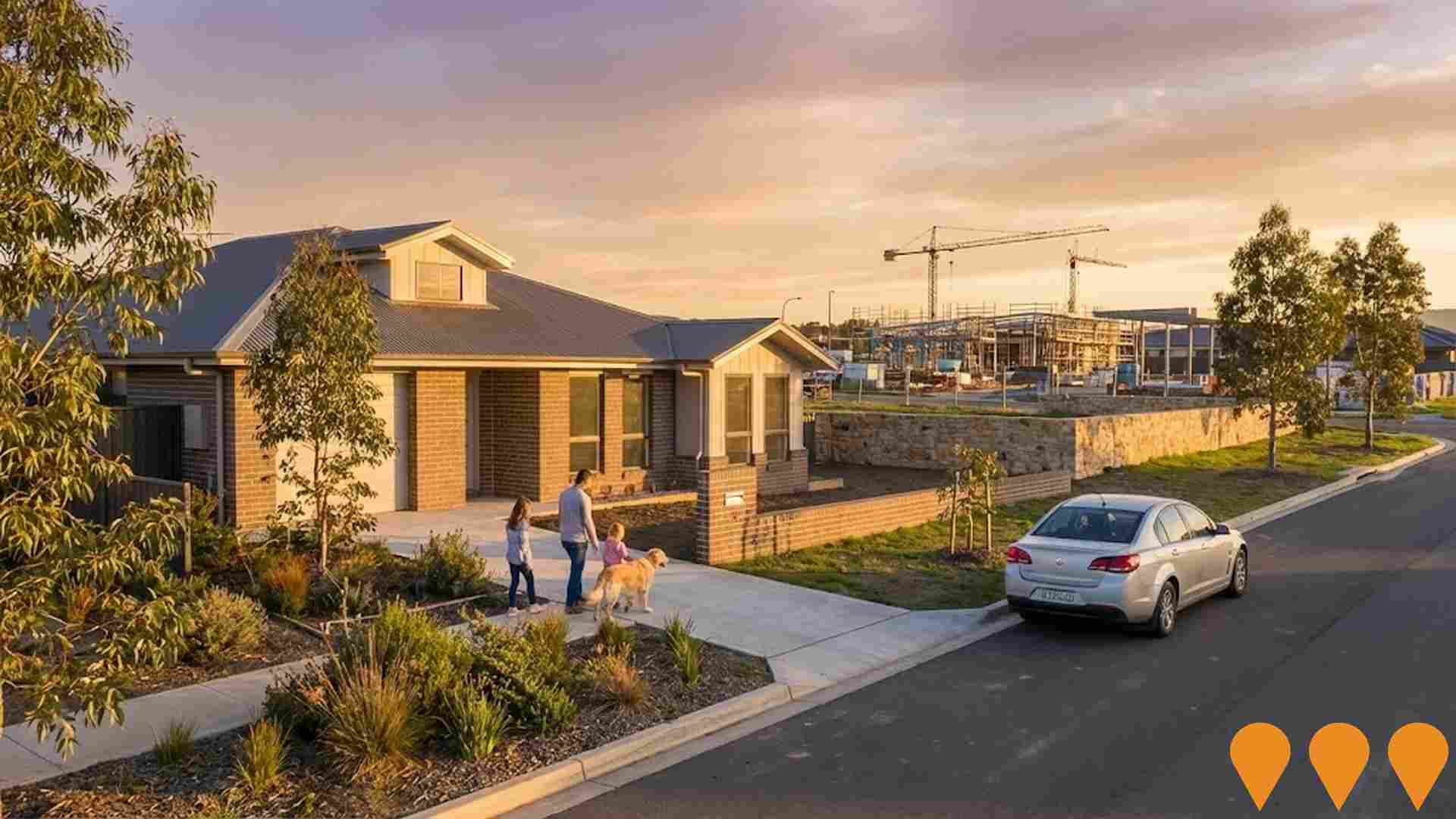
Employment
AreaSearch assessment positions Goulburn Surrounds ahead of most Australian regions for employment performance
Goulburn Surrounds had an unemployment rate of 2.4% as of June 2025, with 7,325 residents employed. Its unemployment rate was 1.3% lower than the Rest of NSW's rate of 3.7%, and its workforce participation was similar to the regional level at 56.4%.
Employment in the area was concentrated in agriculture, forestry & fishing, health care & social assistance, and construction. The employment share in agriculture, forestry & fishing was 3.6 times higher than the regional level, while health care & social assistance had a limited presence with 11.5% employment compared to 16.9% regionally. Labour force decreased by 3.6% over a 12-month period ending June 2025, and employment declined by 4.3%, leading to an unemployment rate increase of 0.7 percentage points. In comparison, Rest of NSW saw employment fall by 0.1%, labour force expand by 0.3%, and unemployment rise by 0.4 percentage points.
National employment forecasts from Jobs and Skills Australia (May 2025) projected a growth of 6.6% over five years and 13.7% over ten years, with local growth in Goulburn Surrounds estimated at approximately 5.6%% over five years and 12.0% over ten years based on industry-specific projections.
Frequently Asked Questions - Employment
Income
Income levels sit below national averages according to AreaSearch assessment
AreaSearch's latest postcode level ATO data for financial year 2022 shows Goulburn Surrounds' median income among taxpayers is $49,647, with an average of $62,322. This is slightly below the national average. In comparison, Rest of NSW has a median income of $49,459 and an average of $62,998. Based on Wage Price Index growth of 12.61% since financial year 2022, current estimates for Goulburn Surrounds would be approximately $55,907 (median) and $70,181 (average) as of September 2025. Census 2021 income data indicates that household, family, and personal incomes in Goulburn Surrounds rank modestly, between the 35th and 37th percentiles. Income analysis reveals that 30.2% of the community (4,574 individuals) earn between $1,500 and $2,999, reflecting patterns seen at regional levels where similarly 29.9% occupy this earnings band. Housing costs are manageable with 88.0% retained, but disposable income sits below average at the 41st percentile, placing the area's SEIFA income ranking in the 5th decile.
Frequently Asked Questions - Income
Housing
Goulburn Surrounds is characterized by a predominantly suburban housing profile, with above-average rates of outright home ownership
In Goulburn Surrounds, as per the latest Census, 98.1% of dwellings were houses, with the remaining 1.9% comprising semi-detached homes, apartments, and other types. This contrasts with Non-Metro NSW's figures of 89.3% houses and 10.7% other dwellings. Home ownership in Goulburn Surrounds stood at 51.2%, with mortgaged properties making up 35.3% and rented dwellings accounting for 13.5%. The median monthly mortgage repayment was $1,733, higher than Non-Metro NSW's average of $1,694 but lower than the national average of $1,863. The median weekly rent in Goulburn Surrounds was $300, slightly below Non-Metro NSW's figure of $310 and substantially lower than the national average of $375.
Frequently Asked Questions - Housing
Household Composition
Goulburn Surrounds has a typical household mix, with a higher-than-average median household size
Family households account for 73.0% of all households, including 28.3% couples with children, 36.6% couples without children, and 7.7% single parent families. Non-family households constitute the remaining 27.0%, with lone person households at 25.3% and group households making up 1.6%. The median household size is 2.5 people, which is larger than the Rest of NSW average of 2.4.
Frequently Asked Questions - Households
Local Schools & Education
Educational outcomes in Goulburn Surrounds fall within the lower quartile nationally, indicating opportunities for improvement in qualification attainment
The area's university qualification rate is 17.8%, significantly lower than the NSW average of 32.2%. Bachelor degrees are most common at 12.3%, followed by postgraduate qualifications (3.5%) and graduate diplomas (2.0%). Vocational credentials are prominent, with 43.9% of residents aged 15+ holding such qualifications - advanced diplomas at 11.6% and certificates at 32.3%. Educational participation is high, with 27.5% of residents currently enrolled in formal education.
This includes 10.0% in primary education, 8.6% in secondary education, and 2.6% pursuing tertiary education. As of a report dated "May 2021", the area has 13 schools serving 831 students, with typical Australian school conditions (ICSEA: 953) and balanced educational opportunities. Education provision is balanced, with 12 primary and 1 secondary school serving distinct age groups. However, local school capacity is limited at 5.5 places per 100 residents compared to the regional average of 13.3, leading many families to travel for schooling.
Frequently Asked Questions - Education
Schools Detail
Nearby Services & Amenities
Transport
Transport servicing is low compared to other areas nationally based on assessment of service frequency, route connectivity and accessibility
Goulburn Surrounds has 711 active public transport stops, served by a mix of train and bus services. These stops are covered by 50 individual routes, offering 858 weekly passenger trips in total. The average distance from residents to the nearest stop is 254 meters.
On average, there are 122 trips per day across all routes, which equates to approximately one weekly trip per stop.
Frequently Asked Questions - Transport
Transport Stops Detail
Health
Health performance in Goulburn Surrounds is well below average with prevalence of common health conditions notable across both younger and older age cohorts
Goulburn Surrounds faces significant health challenges, with common conditions prevalent among both younger and older age groups.
Private health cover stands at approximately 51% of the total population (~7,739 people), slightly lower than the average SA2 area. The most frequent medical conditions are arthritis (affecting 12.1% of residents) and asthma (7.8%), while 62.8% report no medical ailments compared to 61.3% in Rest of NSW. Residents aged 65 and over comprise 23.8% of the population (3,607 people), exceeding the Rest of NSW figure of 21.7%.
Frequently Asked Questions - Health
Cultural Diversity
Goulburn Surrounds is considerably less culturally diverse than average when assessed alongside AreaSearch's national rankings for language and cultural background related metrics
Goulburn Surrounds had a cultural diversity level below average, with 89.5% of its population being Australian citizens, 89.8% born in Australia, and 96.1% speaking English only at home. The predominant religion was Christianity, making up 66.7% of the population, compared to 64.0% across Rest of NSW. In terms of ancestry, the top groups were Australian (32.2%), English (31.5%), and Irish (11.0%).
Notably, Maltese were overrepresented at 0.8%, Scottish at 8.2%, and Lebanese at 0.3%.
Frequently Asked Questions - Diversity
Age
Goulburn Surrounds hosts an older demographic, ranking in the top quartile nationwide
Goulburn Surrounds has a median age of 48 years, which is older than Rest of NSW's median age of 43 and significantly higher than Australia's median age of 38. The age profile shows that the 55-64 year-old group is particularly prominent at 16.9%, while the 25-34 year-old group is smaller at 8.8% compared to Rest of NSW. This concentration of 55-64 year-olds is well above the national average of 11.2%. Post-2021 Census data shows that the 75-84 age group has grown from 6.9% to 7.9% of the population, while the 45-54 age group has declined from 13.6% to 12.6%. By 2041, demographic modeling suggests significant changes in Goulburn Surrounds' age profile. The 35-44 age cohort is projected to grow steadily, increasing by 330 people (20%) from 1,652 to 1,983. Conversely, the number of people in the 15-24 age range is expected to fall by 74.

